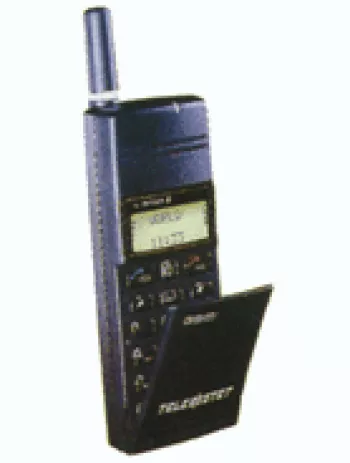
Overview of Ericsson A2618
The Ericsson A2618 was a mobile phone model released in the early 2000s, a period that marked significant advancements in mobile technology. Although considered basic by today’s standards, the A2618 was a technological marvel at the time of its launch. It offered a unique blend of durability, functionality, and simplicity, capturing the attention of consumers worldwide.
Design and Build
The Ericsson A2618 was distinguished by its robust design. Measuring 131 x 51 x 25 mm and weighing 140 grams, it was a sturdy phone that reflected the design norms of the late 1990s and early 2000s. The phone featured interchangeable covers, a novelty during its time, which allowed users to personalize their devices easily. The design was utilitarian, with an emphasis on durability and functionality rather than sleekness.
Display Features
The phone featured a monochrome graphic display capable of showing up to 4 lines of text. During an era where color displays were not the norm, this was considered sufficient for messaging and basic phone functions. The screen lacked the touch capabilities that are common in modern smartphones, but it was designed to provide clear and crisp text readability in various lighting conditions.
Network and Communication
The Ericsson A2618 operated on GSM technology, supporting 2G bands at GSM 900 / 1800. This allowed it to have basic calling and SMS functionalities. However, it lacked GPRS or EDGE capabilities, meaning it was unable to support any form of mobile internet browsing beyond very basic WAP services, which were quite limited in scope compared to what we are accustomed to today.
Memory and Storage
In terms of memory, the A2618 was equipped with an internal storage sufficient to store up to 99 phonebook entries and 30 call records (received, dialed, and missed calls). It did not have a card slot for expandable storage, which was typical of mobile phones from this era.
Sound and Alerts
Although the Ericsson A2618 lacked the capability to play polyphonic ringtones or MP3 files, it supported monophonic ringtones which were quite standard at the time. It did not feature a loudspeaker or a 3.5mm headphone jack, therefore, users relied on the earpiece for sound output during calls.
Battery Performance
One of the strengths of the Ericsson A2618 was its battery performance. It was powered by a removable NiMH battery with a capacity of 900mAh, which offered an impressive standby time of up to 195 hours and a talk time of up to 7 hours. The battery life was particularly long-lasting compared to modern smartphones, reflecting the less demanding hardware and software.
Operating System and User Interface
The A2618 ran on a feature phone operating system, offering a basic interface with simple navigation. The user interface, while not customizable as today’s mobile operating systems, was functional and easy to understand for making calls and sending SMS.
Additional Features and Games
Despite its simplicity, the Ericsson A2618 came with several noteworthy features. It supported SMS messaging and had a basic WAP browser. Additionally, it included alarms and a clock function. The A2618 also had three pre-installed games: Tetris, Erix, and Labirinth, providing entertainment options that were quite appreciated by users at the time.
Conclusion
Overall, the Ericsson A2618 was a reliable mobile device that catered to the needs of its time. While lacking the advanced features of modern smartphones, it served its purpose effectively, proving to be a popular choice for users looking for simplicity and durability in a mobile phone. The phone is a reminder of the rapid technological advancements that have occurred in the world of mobile communications since its release.
Key Features of Ericsson A2618
- GSM 900 / 1800 network support
- Compact dimensions: 131 x 51 x 25 mm
- Interchangeable covers for personalization
- Monochrome graphic display with 4-line resolution
- Reliable battery with up to 7 hours talk time and 195 hours standby
- Features SMS messaging and WAP browser
- Fun built-in games: Tetris, Erix, Labirinth
- Removable NiMH battery
Ericsson A2618 Key Disadvantages
- Lacks GPRS and EDGE support for data services.
- Discontinued status, no longer supported or available for purchase.
- Bulky dimensions compared to modern phones, with a weight of 140 g.
- Monochrome display with a resolution that only supports 4 lines of text.
- No expandable memory slot and limited phonebook capacity of 99 contacts.
- Does not feature a camera.
- No loudspeaker and lacks a 3.5 mm headphone jack.
- Absence of wireless connectivity options such as WLAN and Bluetooth.
- Does not include positioning (e.g., GPS) features.
- Does not support FM Radio.
- Limited to monophonic ringtones with no option for customization.
- Lacks advanced sensors and functionalities like Java or smartphone features.
View Also
More Phones
All Rights Reserved +14266 Phones © Mobilawy 2025

























